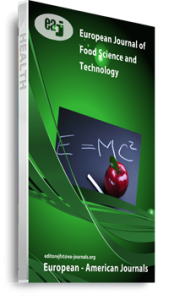The use of composite cassava-wheat flour for commercial bread making purposes and consumption of composite cassava-wheat bread are relatively new in Ethiopia. This experiment was conducted to explore the effects of cassava variety, drying methods and blending ratio on chemical compositions and sensory properties of cassava-wheat composite bread. Two levels of cassava verities (Qulle and Kello), two levels of drying methods (sun and oven) and three levels of blending rations (11.12g, 25.00 g and 42.90 g of cassava in 100 g of control wheat flour) were used and the treatments were factorial arranged in complete randomized design with three replications. Blending with Qulle and Kello varieties had reduced crude protein content to 9.18 and 8.84 %, respectively as compared to the protein content (10.05 %) in the control (100% wheat bread). Similarly, the crude fat dropped to 1.18 to 1.12 % from 2.33%, the crude fiber increased to 2.05 and 2.03 % from 1.17 %, the carbohydrate (%) increased to 80.13 and 81.10 from 77.33, the ash increased to 2.21 and 2.10 % relative to 1.82 % in wheat bread. No significant (P>0.05) differences were detected in proximate compositions attributed to the two drying methods. With increase in blending ratio the carbohydrate, the crude fiber and the ash contents increased whereas the protein content decreased significantly (P<0.05). No significant (P>0.05) differences were observed in overall acceptability of the composite breads due to varieties and drying methods. However, as the blending ratio increased the overall acceptability dropped significantly (P<0.05). It could be concluded that the substitution of cassava flour with wheat flour in bread making with substitution level up to 25 g did not adversely affect the quality properties of the bread and produce bread comparable to that produced from wheat flour in terms of proximate composition and sensory acceptability. Further studies are required to investigate the impacts on anti-nutrients and storage period on cassava-wheat composite bread.
Keywords: Blending, Composite Bread, Drying, Proximate and Sensory Acceptability., cassava

